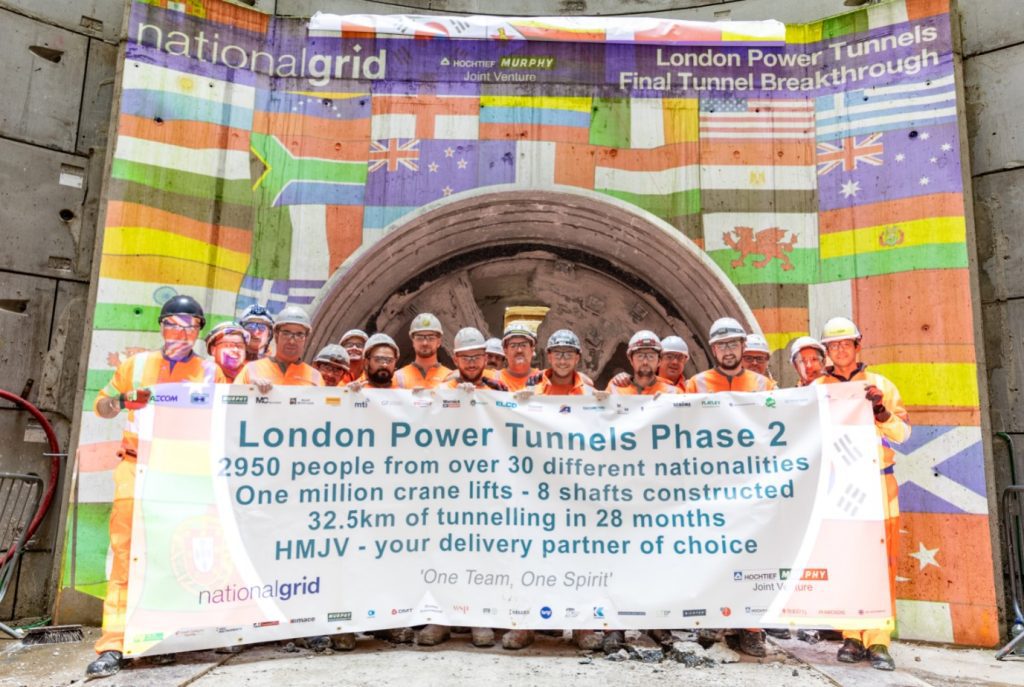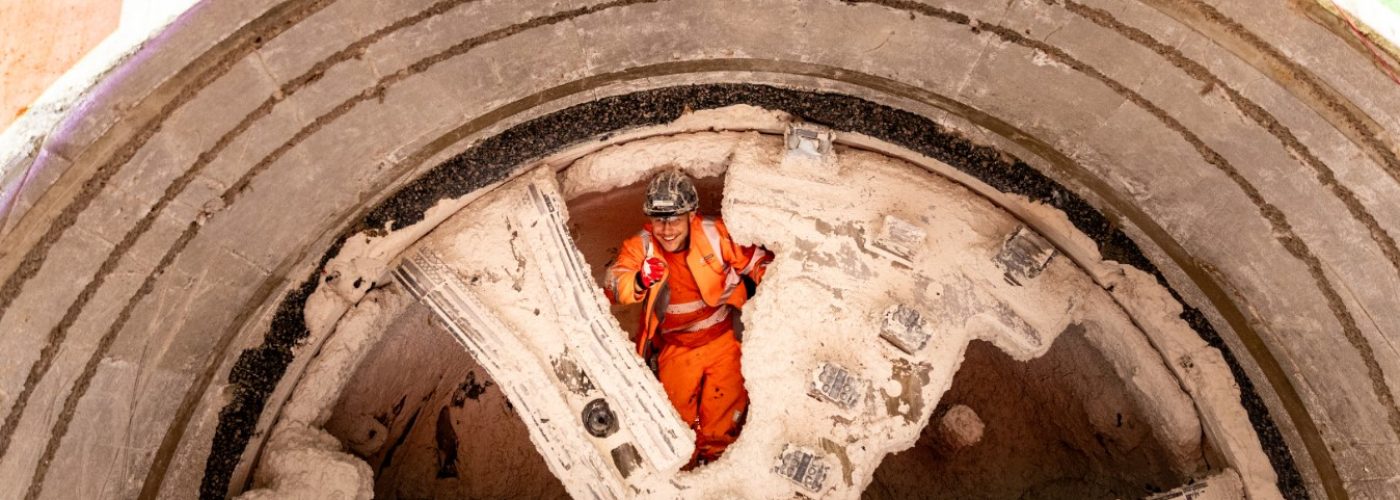- Landmark moment for London Power Tunnels project as 140-tonne boring machine emerges at Eltham site following final subterranean journey
- Breakthrough on Saturday marks the completion of 32.5km of tunnelling at depths of up to 60m under seven South London boroughs
- Due for completion in 2026, the project is rewiring the capital’s electricity network to boost resilience and future-proof supplies as demand grows
National Grid’s £1 billion London Power Tunnels (LPT) project has achieved a major milestone with its final tunnelling breakthrough at Eltham substation in Greenwich.

The last of the project’s massive tunnel boring machines (TBMs), named ‘Grace’, broke through on Saturday, having tunnelled over 11km eastwards from National Grid’s New Cross substation in Southwark.
All 32.5km of the project’s underground route are now complete, with installation of 200km worth of high voltage cable – enough to stretch from London to Cardiff – already underway between substations at Wimbledon and Crayford.
In total the project will have shifted 900,000 tonnes of earth – equivalent in volume to half of Wembley Stadium – with 99.98% of waste material diverted from landfill.
The LPT project’s newly installed transmission infrastructure is due to be fully operational by 2026, with the aim of reinforcing and future-proofing London’s electricity network – and supporting Britain’s transition to net zero – as demand in the capital grows.
Construction of the tunnels began in March 2020 with the tunnelling works undertaken by National Grid’s delivery partner HOCHTIEF-Murphy Joint Venture.
Alice Delahunty, President of National Grid Electricity Transmission, said:
“Our London Power Tunnels project has achieved a lot since it kicked off in 2020, but the final tunnelling breakthrough at Eltham is a particularly remarkable moment.
“This complex engineering endeavour is now really taking shape, with completion of tunnelling now physically linking our sites across South London for the first time and meaning we can move on to the next chapter to progress our vital cabling work.
“The outstanding effort by our project teams and suppliers is strengthening London’s electricity network and making sure it safely, reliably and efficiently powers homes and businesses in the capital for years to come.”
Santiago Daniele, HMJV Project Director, said:
“It’s been an incredible journey so far, from taking over our tunnel drive sites a week after the covid lockdown, to sinking eight shafts and undertaking five tunnel drives with four TBMs over the past three and half years.
“With our final TBM drive breaking through at Eltham ahead of the original baseline programme, it’s testament to the collaboration, ingenuity and fantastic joint culture of all involved – despite all of the challenges faced. This remarkable achievement has laid a solid foundation for the Enterprise in achieving National Grid’s vision of rewiring London and connecting with the capital.
“We’re incredibly proud to be delivering for National Grid a scheme of such significance – and being their delivery partner of choice for complex major infrastructure involved in LPT Phase 2.”
Minister for Nuclear and Networks, Andrew Bowie, said:
“Today’s completion is a huge milestone for the London Power Tunnels project, a superb feat of British engineering that will help future-proof our capital’s electricity network.
“This is part of National Grid’s wider commitment to rewire and modernise London’s electricity network, significantly increasing London’s capacity and energy security for years to come.”
Tunnelling on the LPT project was completed in three sections between existing National Grid substations – Wimbledon-New Cross (12km); New Cross-Hurst (18km); and Hurst-Crayford (2.5km) – with the help of four TBMs named Christine, Caroline, Edith and Grace.
Breakthroughs previously took place at Eltham in June 2022 (TBM Christine tunnelling from Hurst), Wimbledon in July 2022 (TBM Caroline tunnelling from Kings Avenue), Crayford in January 2023 (Christine again tunnelling from Hurst) and Kings Avenue in April 2023 (TBM Edith tunnelling from New Cross).
Vertical shafts ranging between 9-15m in diameter and up to 55m in depth were constructed along the route, serving as waypoints for the TBMs, and helping project teams safely access the tunnels for maintenance now and when operational in the future (headhouses will be built to cover the shafts for safe future use).
The Hurst substation site recently saw a world record-breaking pour of cement-free concrete to fill the base of its 55 metre deep shaft following Christine’s two tunnel drives to Eltham and Crayford.
In another first for LPT, National Grid’s new Bengeworth Road substation on the tunnel route in Lambeth is being built free from greenhouse gas SF6 – the only one of its kind to date in Britain and part of National Grid’s ambition for its infrastructure to be SF6-free by 2050.

Building, Design & Construction Magazine | The Choice of Industry Professionals





